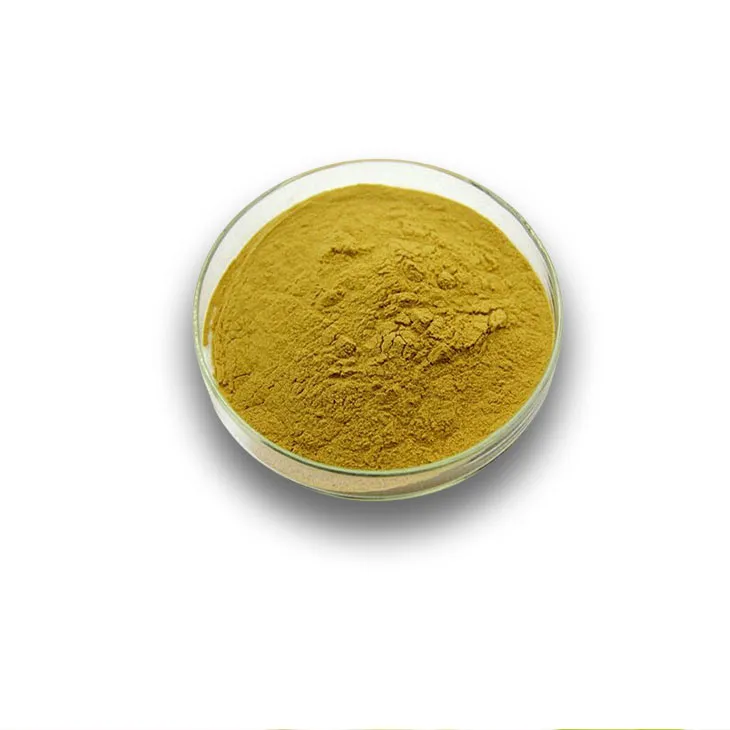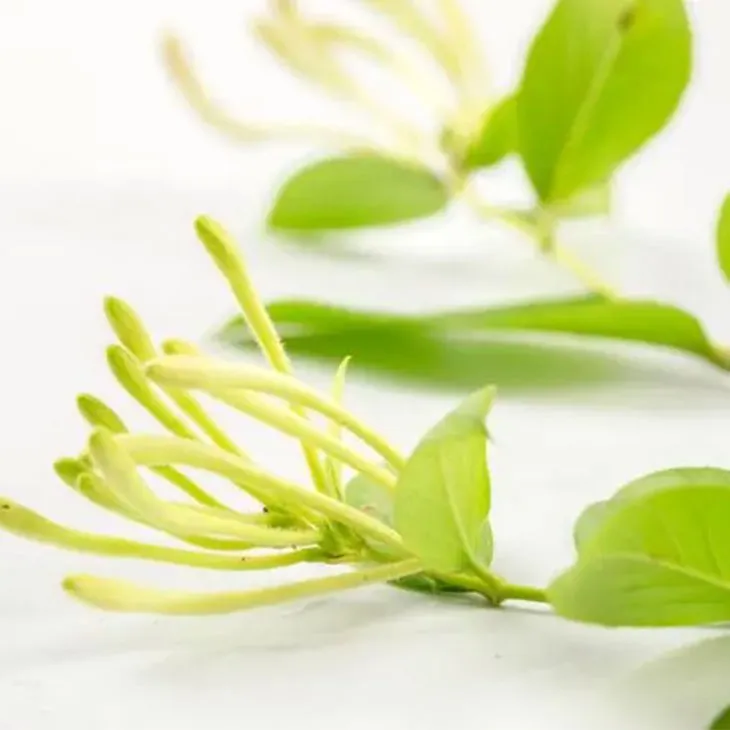- 0086-571-85302990
- sales@greenskybio.com
How to extract honeysuckle pollen from plants?
2024-11-27

1. Introduction
Honeysuckle is a well - known plant with various uses. Honeysuckle Pollen also contains certain beneficial substances. Extracting Honeysuckle Pollen from plants can be a useful process for research, traditional medicine, or other purposes. However, it requires proper techniques to ensure the quality and quantity of the pollen obtained. In this article, we will explore in detail how to extract Honeysuckle Pollen from plants.

2. Flower Collection
The first step in extracting honeysuckle pollen is the collection of the flowers. This step is crucial as it determines the quality and quantity of the pollen that can be obtained later.
2.1. Timing
The optimal time for collecting honeysuckle flowers is when they are just blooming. At this stage, the flowers have not yet shed much pollen. The buds are in a state of full development, and the anthers are about to release pollen. If the flowers are collected too early, there may not be enough pollen formed yet. On the other hand, if the flowers are collected too late, a significant amount of pollen may have already been dispersed, resulting in a lower yield.
2.2. Selection Criteria
When collecting honeysuckle flowers, certain selection criteria should be followed:
- Choose healthy flowers: Flowers that are free from diseases, pests, and physical damage are more likely to have good - quality pollen. Look for flowers with vibrant colors and intact petals.
- Select fully - developed flowers: As mentioned earlier, flowers that are just about to bloom or are in the early stages of blooming are preferred. These flowers usually have well - developed anthers containing pollen.
2.3. Collection Tools and Methods
For collecting honeysuckle flowers, simple tools can be used. A pair of clean scissors or pruning shears is sufficient. When collecting, carefully cut the flower stems near the base of the flower. Avoid excessive shaking or rough handling of the plants, as this may cause premature pollen release and loss.

3. Pollen Extraction Methods
After collecting the honeysuckle flowers, the next step is to extract the pollen. There are several methods available for this purpose.
3.1. Natural Drying Method
The natural drying method is one of the simplest and most commonly used techniques for extracting honeysuckle pollen.
- Prepare a clean and dry surface: A tray or a piece of clean paper can be used. Make sure the surface is free from moisture and contaminants.
- Spread the collected flowers: Gently spread the honeysuckle flowers on the prepared surface. Try to keep the flowers in a single layer to ensure even drying.
- Allow for drying: Place the flowers in a well - ventilated area away from direct sunlight. The drying process may take several days, depending on the environmental conditions such as humidity and temperature. As the flowers dry, the anthers will gradually release the pollen.
- Collect the pollen: Once the flowers are completely dried, gently tap or shake the dried flowers over a clean container. The pollen will be released and fall into the container. Use a small brush or a piece of clean paper to carefully sweep any remaining pollen from the dried flowers into the container.
3.2. Chemical - Assisted Extraction
The chemical - assisted extraction method can be used to improve the efficiency of pollen extraction, especially when dealing with a large number of flowers or when a higher yield is desired.
- Select an appropriate chemical: A mild chemical solution can be used to soften the anther walls, making it easier for the pollen to be released. For example, a diluted solution of a surfactant or a weak acid may be considered. However, it is important to ensure that the chemical used is safe and does not contaminate the pollen.
- Prepare the chemical solution: Follow the proper dilution instructions to prepare the chemical solution. The concentration of the solution should be carefully controlled to avoid any adverse effects on the pollen or the plant material.
- Immerse the flowers in the solution: Place the collected honeysuckle flowers in the prepared chemical solution for a short period of time. The duration of immersion may vary depending on the type of chemical used and the condition of the flowers, but it is usually in the range of a few minutes to an hour.
- Rinse the flowers: After the immersion, carefully rinse the flowers with clean water to remove any remaining chemical solution. This step is crucial to ensure that the pollen is free from chemical contamination.
- Extract the pollen: After rinsing, the flowers can be dried using the natural drying method as described above. The softened anther walls will release the pollen more easily during the drying process, resulting in a higher yield.

4. Pollen Storage
After the pollen has been successfully extracted, proper storage is essential to maintain its quality and viability.
4.1. Drying to the Appropriate Water Content
The extracted pollen should be dried to an appropriate water content. If the pollen contains too much water, it may be prone to mold growth and deterioration. On the other hand, if it is too dry, it may lose its viability. The optimal water content may vary depending on the specific requirements, but generally, a relatively low water content is preferred. This can be achieved by further drying the pollen in a dry environment or using a desiccant.
4.2. Storage Containers
The choice of storage containers is also important. Air - tight containers such as glass or metal ones are recommended. These containers can prevent moisture from entering and protect the pollen from external contaminants. Plastic containers may not be as suitable as they may allow some gas exchange or may release harmful substances over time.
4.3. Storage Temperature
The storage temperature also plays a crucial role in maintaining the quality of the pollen. A low temperature is generally beneficial for pollen storage. Storing the pollen in a refrigerator or a freezer can significantly extend its shelf life. However, when storing in a freezer, special care should be taken to prevent moisture condensation when the pollen is removed from the freezer for use.

5. Conclusion
Extracting honeysuckle pollen from plants involves several important steps, from flower collection to pollen extraction and proper storage. By following the methods described in this article, it is possible to obtain high - quality honeysuckle pollen. However, it is also important to note that when handling plants and pollen, appropriate safety measures should be taken to protect both the operator and the environment. Additionally, any extraction and storage methods should comply with relevant regulations and ethical standards.
FAQ:
Question 1: Why should we choose the flowers when they are just blooming for pollen extraction?
When the honeysuckle flowers are just blooming, they haven't shed much pollen yet. This ensures that we can obtain a relatively large amount of pollen. Also, at this stage, the pollen quality is likely to be better as it is fresh and not exposed to too many external factors that could degrade it.
Question 2: What are the advantages of natural drying for honeysuckle pollen extraction?
Natural drying is a simple and relatively pure method. It doesn't introduce additional chemicals into the pollen. By drying the flowers, the anthers will gradually dry out and release the pollen naturally. This way, we can obtain pollen in a more natural state, which is beneficial for applications where purity and naturalness are important.
Question 3: How does chemical - assisted extraction work for honeysuckle pollen?
Chemical - assisted extraction helps soften the anther walls. Chemicals can react with the components of the anther walls, making them more pliable. This allows the pollen inside the anthers to be released more easily. However, one needs to be careful with the type and amount of chemicals used to avoid contaminating the pollen and affecting its quality.
Question 4: What is the appropriate water content for dried honeysuckle pollen?
The appropriate water content for dried honeysuckle pollen depends on various factors, but generally, a relatively low water content is desired. A water content that is too high may lead to mold growth or other forms of spoilage during storage. Usually, aiming for a water content of around 5 - 10% can help ensure the long - term stability of the pollen.
Question 5: Why is it important to store honeysuckle pollen in air - tight containers?
Storing honeysuckle pollen in air - tight containers is crucial because it helps prevent moisture absorption from the air. Moisture can cause the pollen to clump together, lose its viability, or even start to decompose. Also, air - tight containers can keep out contaminants such as dust, other pollen, or microorganisms that could potentially affect the quality of the honeysuckle pollen.
Related literature
- Study on the Extraction and Properties of Honeysuckle Pollen"
- "Optimization of Honeysuckle Pollen Extraction Techniques"
- "The Role of Honeysuckle Pollen in [Relevant Field]"
- ▶ Hesperidin
- ▶ citrus bioflavonoids
- ▶ plant extract
- ▶ lycopene
- ▶ Diosmin
- ▶ Grape seed extract
- ▶ Sea buckthorn Juice Powder
- ▶ Beetroot powder
- ▶ Hops Extract
- ▶ Artichoke Extract
- ▶ Reishi mushroom extract
- ▶ Astaxanthin
- ▶ Green Tea Extract
- ▶ Curcumin Extract
- ▶ Horse Chestnut Extract
- ▶ Other Problems
- ▶ Boswellia Serrata Extract
- ▶ Resveratrol Extract
- ▶ Marigold Extract
- ▶ Grape Leaf Extract
- ▶ blog3
- ▶ Aminolevulinic acid
- ▶ Cranberry Extract
- ▶ Red Yeast Rice
- ▶ Red Wine Extract
-
Lemon Extract
2024-11-27
-
Beetroot juice Powder
2024-11-27
-
Fig Extract
2024-11-27
-
Marigold Extract
2024-11-27
-
Shikonin
2024-11-27
-
Plantain extract
2024-11-27
-
Clove Powder
2024-11-27
-
White Peony Extract
2024-11-27
-
Centella Asiatica Extract
2024-11-27
-
White Willow Bark Extract
2024-11-27





















